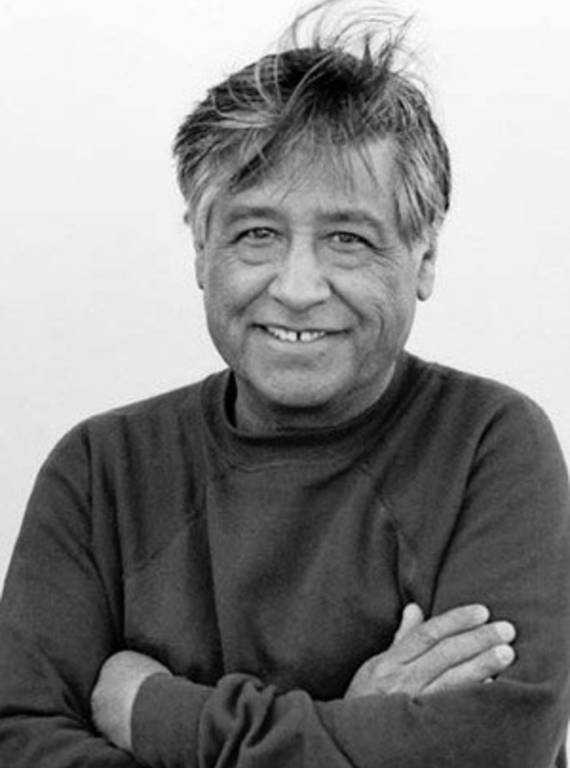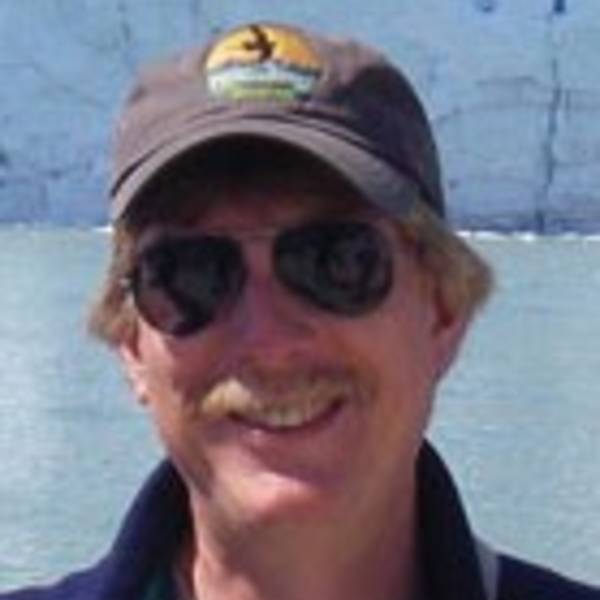On César Chávez Day, NPCA’s traveling park lover reflects on a recent trip to the labor leader’s former home and headquarters — and the legacy a new generation is keeping alive
This story is part of a series by Jim Stratton exploring some of America’s most fascinating and least known places.
I was recently traveling down Highway 58 through Tehachapi, California, as the words to the Little Feat song “Willin’” were rolling through my head: “from Tucson to Tucumcari and Tehachapi to Tonopah.” It was on that lonely road that I spotted one of those ubiquitous brown highway signs announcing that the César E. Chávez National Monument was one mile ahead. This sign was a bit of surprise, as the national park guidebook I use for trip planning did not list this new national monument. But always nimble and on the lookout for a new park, I engaged my right-hand blinker and went off to explore the life of one of America’s greatest labor organizers.

César Chávez, a leader whose non-violent advocacy led to unprecedented victories in labor and human rights.
Courtesy of the César Chávez FoundationThis park hadn’t been on my radar, in part, because it is so new. The Obama administration created 15 National Park Service monuments over the course of the president’s two terms (two of which are now national historical parks), mostly celebrating visionary leaders and historic landmarks. When President Obama created the Chávez monument in 2012, it was the first — and is still the only — Park Service site devoted to the life of a contemporary Latino.
Why was this designation so important? For one thing, many visitors might simply not have known about it without the Park Service arrowhead and resources to interpret the visionary leader’s history. At the visitor center, I learned from Bernadette, the employee behind the desk, that visitation at the site had gone up 700 percent since Obama signed the monument proclamation. She told us that people were planning their vacations around visiting the monument and getting a stamp in their national park passport. She told us, “that little blue passport book is huge” in raising awareness of Chávez’s Tehachapi campus, the headquarters for the United Farm Workers.
Growing up in Oregon in the 60s, I remember well the campaign Chávez organized to boycott grapes, highlighting the plight of the farm workers in California. What I didn’t appreciate at the time was the extent to which the farm workers movement was organizing workers in other agricultural areas, not just grapes — and how the issues were about much more than labor relations.
So much of the farm worker movement was also about civil rights issues such as free speech and assembly, which were being challenged by growers, judges and local law enforcement. Chávez himself was jailed numerous times as he agitated for the right of farm workers to be able to collectively bargain for better wages and working conditions. Those basic labor rights were not extended to farm workers in the National Labor Relations Act of 1935. But as Chávez struggled against a system that profited from keeping farm labor cheap and unorganized, he grew the movement to be a voice not only for farm workers, but for the poor and disenfranchised everywhere. The union’s greatest victory was working to pass the California Agricultural Labor Relations Act, which became law in 1975, giving farmworkers collective bargaining rights.
César Chávez was born in 1927 in Arizona. In 1938, his family moved to California after the bank foreclosed on their farm near Yuma during the Dust Bowl, an agricultural and economic crisis that displaced tens of thousands of families from their land. This experience helped inspire Chávez’s fierce dedication to the plight of poor farm workers. Later, while working California’s agricultural fields, Chávez experienced firsthand the unsafe working conditions, poor wages and rampant discrimination that was the everyday reality of farm workers.

Labor of Love
New California park site dedicated to the work of labor leader César Chávez.
See more ›During the 1950s, Chávez worked with the Community Service Organization (CSO) and embraced community grassroots organizing as the way to not only address fair labor issues, but also basic civil rights issues like voting, housing and police brutality. When, in 1962, the CSO declined to support Chávez’s desire to organize a labor movement, preferring to stick to other issues, Chávez and several friends, including leader and long-time collaborator Dolores Huerta, started the National Farm Workers Association, the precursor to the United Farm Workers Union.
As the agricultural labor movement grew, Chávez recognized that a well-coordinated labor movement demanded that he move from Delano, his hometown, to a more central location to facilitate ongoing education and training and to ensure that the movement was not geographically bound to a specific labor fight. That new location ended up being 187 acres in the Tehachapi Mountains, 30 miles east of Bakersfield at a former Kern County tuberculosis sanitarium. The site had many of the amenities needed for an educational retreat center, including meeting rooms, residential buildings, maintenance shops, water, sewer and office space.
In 1971, the county was offering up the sanatorium for auction, but Chávez knew the owners would not sell to union organizers, let alone Latino union organizers. So he enlisted help from Edward Lewis, a movie producer in Hollywood who was supportive of Chávez’s work. Union employees were not allowed access to the site, so to make certain the facility would meet the needs of the Farm Workers Union, Chávez’s brother, Richard, posed as Lewis’s chauffeur when Lewis went to inspect the property. Richard reported back that it was just what they were looking for. After a spirited round of bidding with a local rancher, Lewis bought the property for $231,500, and by 1972, the United Farm Workers Union had a new home. Chávez named it Nuestra Señora Reina de la Paz (Our Lady Queen of Peace), often referred to as just “La Paz.”
Ironically, Chávez’s wife Helen had spent time at the sanatorium when she was young, and she was initially not at all pleased that her husband had bought it and wanted to live there. Yet she ended up living at La Paz until her death in 2015, and the Park Service now has plans to renovate the family house to include in its preservation and interpretation efforts. The site is also still the working home of the United Farm Workers Union. Staff live on-site, and the retreat and education center actively support union organizers. Since the monument proclamation, the National Park Service and the National Chávez Center have cooperatively run the visitor center, with plans to eventually open the Chávez home to visitors.
Stay On Top of News
Our email newsletter shares the latest on parks.
The Park Service is busy digitizing a vast collection of Chávez family and United Farm Worker videos that will eventually be available for the public to view. We saw one of those videos as well as a gallery of photos from the union’s early days. There is a replica of Chávez’s office showing how simply he lived and worked. Visitors can also see Chávez’s grave and the beautiful outdoor memorial garden where he was buried after his death in 1993.
This new monument is a work in progress, but well worth the visit. The best part of my visit was the walk I took around the grounds of the retreat and education center where the spirit of this great American leader, César Chávez, is still alive in the many organizers continuing his legacy for justice.
See more in this blog series by traveling park lover Jim Stratton exploring some of America’s most fascinating and least known places.



